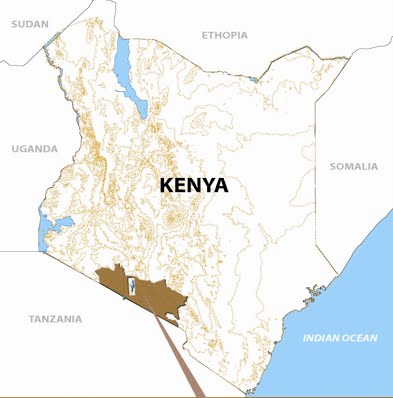Among the recommendations of the settlers’ Land Committee that had been formed in 1905 and chaired by Lord Delamere, a well known Kenyan settler in Kenya’s Rift Valley Province, was to group Africans into definite reserves away from European settlers or any lands likely to be suitable for European settlement. The colonial government used the 1908 bill prepared by the protectorate authorities for the settlers’ legislative council, the Land Ordinance Cap. 113 of 1923 to take away large tracks of high potential land from Africans. The bill declared such lands to be public lands under the control and subject to the deposition of the Governor. Such lands were declared white highlands and the Africans were pushed into reserves Herren (1991), Wacker (1996) and Gitau (2006). The restricted white highlands were eventually subdivided into large farms and ranches, occupied by a low-density population composed primarily of white British settlers who mainly practiced extensive market oriented livestock farming.
At independence in 1964, the pastoralists and pastoral areas were only marginally integrated into the mainstream of the Kenyan economy. For instance, pastoral beef production did not find its way into the international market, as was the case with the agrarian producers. However, pressure from international donor agencies, which financially supported the pastoral development and basically developed the ASAL, had a major influence on the formulation of government policies. This resulted in formulation of the group ranch policy modeled along the US ranches and supported by the World Bank financed Kenya Livestock Development Project I (KLDP I). The project was implemented by the Kenyan government objectively to step up commercial off-take from pastoral areas and to secure land tenure in order to make such an increase of production possible. The group ranches, which were to be owned by an identified fixed group of people with a fixed territory was seen as the way to stop the “tragedy-of-the-commons” perceived as happening in African pastoral areas by administrators, planners and donor agencies alike.
The group ranches were to be run under collective arrangement by bona fide members of the group ranches. Under the legal framework as provided in the Group Representatives Act of 1968, the pilot group ranches were established in Kajiado District.
As indicated above, the push for the creation of the group ranches was driven by international organizations without much commitment from those in power in Kenyan government. In Mukogodo, Laikipia North District, for instance, many pastoralists did not know the procedure of electing management committees, often confusing them with political party officials. There was a lot of double registration and family members got registered in different group ranches, no loans were given and no infrastructural development took place.
The 1974 drought exposed further the drawbacks of ambitious government policy on ranch development. Shift of emphasis to dry land agricultural production or rain fed agriculture, culminated in the formation of inter-ministerial department of Arid and Semi-Arid Land Program (ASAL Program), which was officially launched in 1979.
As the government’s attention shifted towards ASAL development, the interest in pastoral production waned under the argument that with the low population density and remoteness, heavy commitments were neither necessary nor possible. The policy concern with pasture in the high or medium potential areas of Kenya, which guided the Kenya Rangeland Ecological Monitoring Unit (KREMU), as opposed to the monitoring of arid and semi-arid rangelands, confirm this shift.
Against this background of neglect of the pastoral area, the clamour for subdivision of the former group ranches into individual holdings can be associated with the neglect of the pastoral area infrastructure development and low extension services to support livestock enterprise. Sadly, this subdivision has been associated with environmental degradation as it was highlighted in several community meetings held during the study period.
About Us
The South Rift Valley region of Kenya where SORALO works spans an area of approximately 850,000 hectares (2,100,396 acres) covering a range of topographic and ecological conditions and hosts one of the richest large mammal assemblages on earth. The productivity and survival of wildlife and livestock in this area depend on a common ecological strategy rooted in mobility and feeding efficiency. This has made it possible for wildlife and pastoral livestock to co-exist for over 3,000 years without significant degradation of the environment. This area comprises of mainly arid and semi-arid lands, and unfortunately has a history of long-term marginalization and neglect, particularly by governmental policies and departments. However due to its rich culture, wildlife, ecology and landscape the potential for diversification of land use and livelihood generation, particularly through tourism, is high.

Area Map

No comments:
Post a Comment